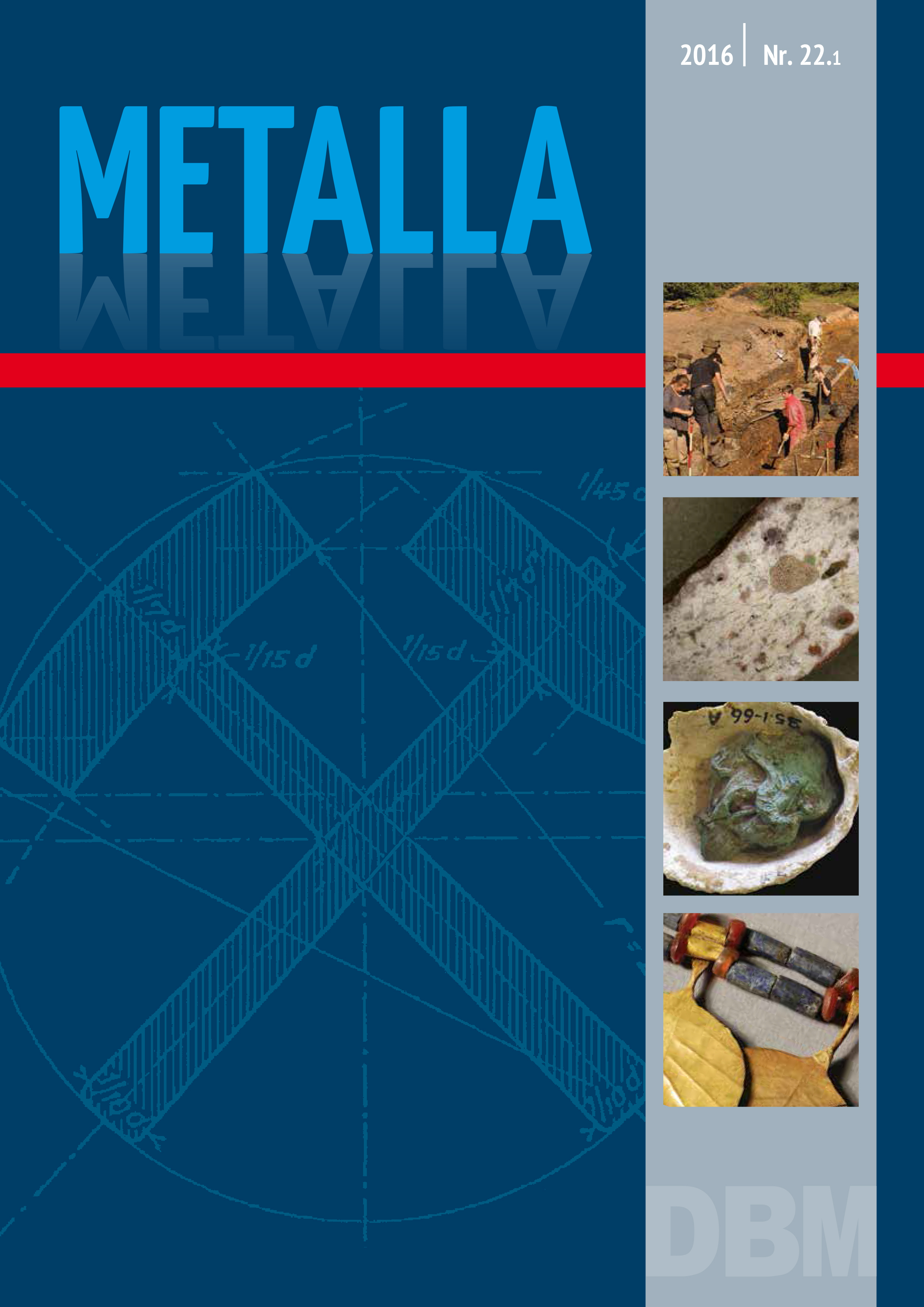Carolingian and Ottonian Brass Production in Westphalia Evidence from the Crucibles and Slag of Dortmund and Soest
DOI:
https://doi.org/10.46586/metalla.v22.2016.i1.21-39Keywords:
Archaeometallurgy, Bar Ingots, Calamine, Lead Isotope Analysis, Smithsonite, Viking Age tradeAbstract
The abundant new crucible and slag finds from the Thier-Brauerei excavation in the center of medieval Dortmund have provided a stimulus to revive the discussion of Westphalian brass cementation technology in the Carolingian and Ottonian periods and to explore unanswered questions concerning the process and its potential outcome. A total of sixteen crucibles and slag samples from stratified deposits in the Dortmund-Thier-Brauerei and Soest-Plettenberg excavations were prepared for optical and scanning electron microscopy to analyze metallic inclusions, slag phases and crucible ceramic. The copper and brass inclusions within the crucibles and their adhering slag from Dortmund show a relationship between lead and zinc contents and indicate that lead-bearing calamine ore was heated with charcoal and copper metal to produce leaded brass. Ternary Cu-Zn-Pb alloys are common for contemporary bar-shaped ingots, which supplied casting industries in early medieval Northern European towns like Hedeby and Kaupang. Concerning the zinc-rich black slag lining the interior of some crucible fragments, they regularly showed increases in lime and iron oxides in relation to the crucible ceramic and thus reflect impurities coming from the zinc ore. The lead-silicate slags often found in association with crucible finds in Dortmund have yet to have a clear interpretation; although the lead isotope analysis of crucibles and lead-silicate slag shows they may have the same source of lead, the production of the lead-silicate slag is definitely unrelated to the metallurgical process occurring inside the cementation crucibles themselves.
Downloads
Published
Issue
Section
License
Copyright (c) 2016 Stephen Merkel

This work is licensed under a Creative Commons Attribution 4.0 International License.



